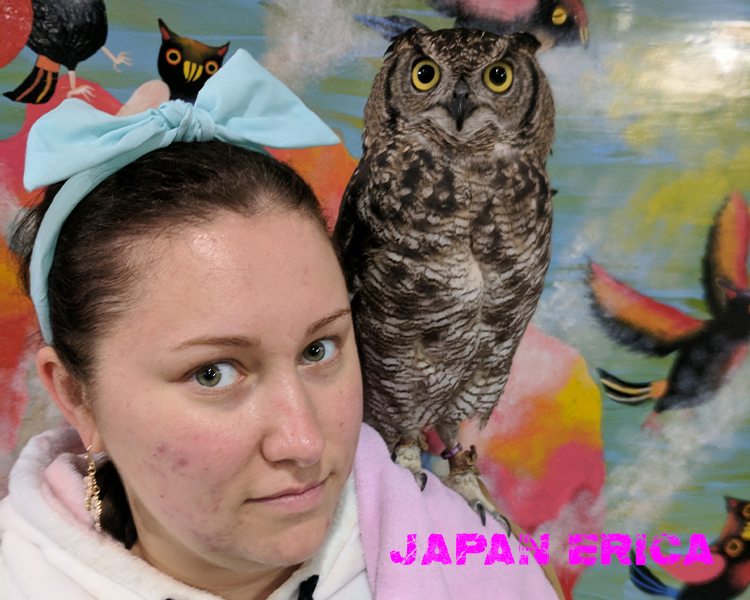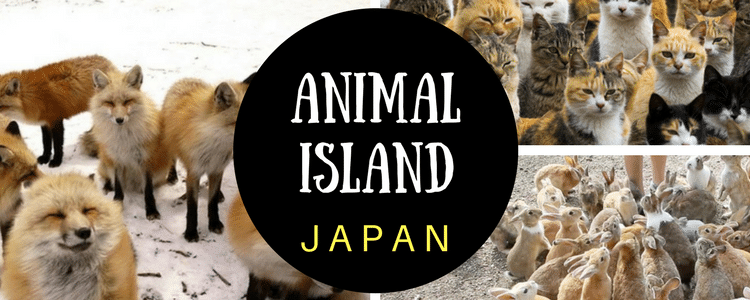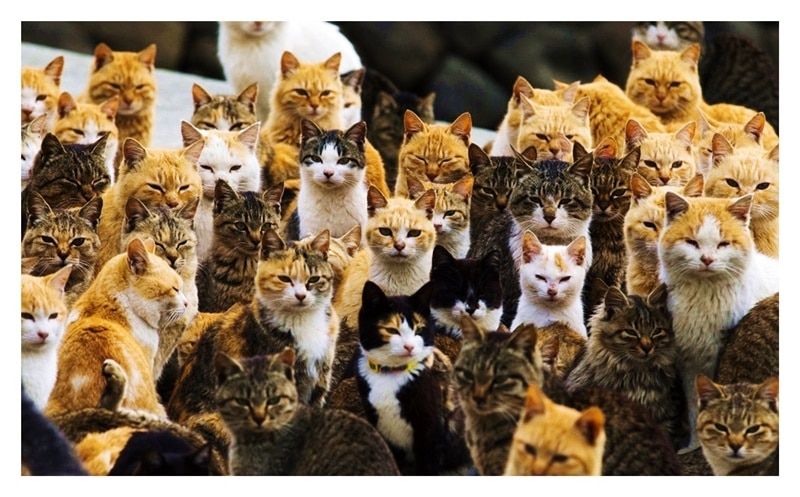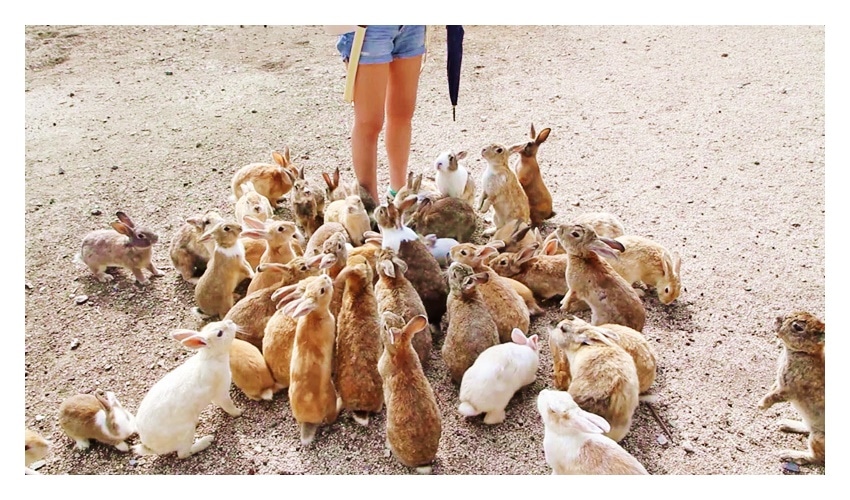These destinations are all accessible to an adventurous traveler, although these places are not really intended to be a tourist spot. Many people prefer this type of places rather than zoos because it’s sad to see animals getting caged up and not having too much freedom.
Check out these amazing places that you may want to visit especially if you’re an animal lover! 😀
1. Nara Deer Park
These deer are happy to see you and aggressively looking to be fed. Nara Deer Park is an incredible place to see some deer. Nara Park is a place to experience unlike any other place in Japan because of how many deer there are. Most other animal places focus on much smaller animals, so this park is a treat for visitors.
Be warned though: the deer are still wild animals. They can bite you, often just looking for hidden food on your body. So wear a thick jacket or ensure its clear you don’t have any hidden food.
The Nara Deer Park is a park located in Nara, Japan that is home to hundreds of freely roaming Sika deer that are considered, by some, to be sacred messengers of the gods in Shinto religion. The park is a popular tourist destination and visitors can interact with the deer and purchase crackers to feed them. It is considered an important part of Japanese cultural heritage and is also a designated UNESCO World Heritage Site. It’s East of Osaka and South of Kyoto.
Before you even get to the park proper you’ll find deer standing on sidewalks and in the streets and hanging around near temples. Once you reach the park you’ll find stands and vendors selling packs of round wafer-like crackers that you can then feed to the deer. The procedure to feed the deer is to bow to the deer, the deer will bow back, and then you give it a cracker.
2. Tashirojima and Aoshima Cat Islands
Since cats are considered as lucky animals in Japan, there’s no wonder that we can find some places like this, an island full of cute cats. Tashirojima (Tashiro Island) is a place for these many cats and has a long history with them.
During the Edo-period, residents of Tashirojima were raising some silkworms as a source of income. Some mice were preying on these silkworms and as a solution, people on the island brought some cats. Over time, the cat population increased while the human population decreased. Today, the cats outnumber the human residents six to one.
The Tashirojima’s single grocery store is not open every day, so its either you stay at a guesthouse that provides some meals for you.
Aoshima
Cat lovers, there’s more in Japan when it comes to cats, in fact, Aoshima is another place for this adorable creatures. Aoshima’s fishermen originally brought the cats to the island to keep the rat population down, the same purpose as in Tashirojima.
In 1976, the island’s only elementary school had shut down, and Aoshima became more abandoned. Today, the cats roam freely throughout these abandoned houses, the school, and temples, keeping a watchful eye on the visitors.
3. Okunoshima Rabbit Island
A visitor’s video of a rabbit stampede went viral which resulted in its popularity among the tourists and other visitors. The number of rabbits on Okunoshima is unclear, as the feral population is left to breed freely. But the rabbits are incredibly cute and totally unafraid of the tourists who come to see them. They will approach visitors offering them fruit and vegetables, and in some cases, even follow or climb on them.
Okunoshima, also known as Usagi-Shima (Rabbit Island), is a predator-free zone for rabbits since cats and dogs are banned. But there’s actually the tonbi, (a species of hawk-like birds native to Japan) circling the island doing whatever they like to do. But for the most part, the rabbits are left in peace to do wherever they please on the island.
During the old times, Okunoshima was the home to a chemical munitions plant, making and storing tear gas and mustard gas. Many residents and employees were not informed about what the factory was producing resulting many becoming ill or sick. A colony of rabbits was brought in to test the efficacy of the plant’s chemical weapons, starting the island’s association with rabbits. When the WWII has ended, the plant was closed for good, the chemical weapons were disposed of, the rabbits at that time were killed and a policy of silence maintained until 1988.
The rabbits of today in the island have no connection to the rabbits used in the munitions plant. There are two theories as to their origin, but whether they were brought to the island deliberately by the munitions plant as a backup, or set loose on the island by school children in the 1970s, the rabbits are here to stay.
4. Zao Fox Village
The fox is famously known in Japanese folklore as the shape-shifting tricksters or the messengers of the god Inari. With the efforts of the residents in Zao Fox Village, foxes are finally being known to the visitors too. In 1990 it was a sanctuary for foxes, but now it has become just like the cat and rabbit islands—an incredible tourist attraction!
But please, do not bring your own food! The bags of food you purchase on the island is the only food you can feed to the foxes.
This is for your protection as well as the foxes as they can smell the food in your bag! Also, avoid having anything dangling from your clothes or on your bag that might cause a temptation for the foxes. Actually, some unfortunate visitors have seen their cellphones stolen by the foxes!
There is information displayed about the foxes, but most visitors rush through, eager to see the large enclosure where the foxes roam freely. There are also a few foxes in cages, which are recovering from injuries (the foxes are wild and occasionally get into fights). However, the foxes are wild animals and should be respected as such. Which means, you feed them only from the required feeding platforms, and yeah, do not attempt to pet them.
But once you are in the village, surrounded by peaceful, sleeping foxes, great for photographing, the rules become so simple. Especially when a curious fox is following you as you explore the whole place.
5. Owl Cafes and Animal Cafes
I hesitated before putting this on the list, because this is not just one destination with a bunch of animals. Instead several cafes across Japan have cafes that allow you to interact with exotic animals in a fun and unique way. Owl cafes are a number one example, where you can fed and pet some of the coolest exotic birds around. There are also numerous other cafes including a rabbit cafe, otter cafe, and cat cafes. They are called cafes because usually a drink comes with your admission, and this probably helps the restaurant with some legal zoning issues versus being a “zoo” instead.

So, have you decided what to visit first? Well, since all of these are great places, maybe you should try visiting them all! And don’t forget to comment below on how you think about these great places in Japan!




Great! Luv foxes!
Ohhhhh didn’t know that. NOW I KNOW1 ><!
YOU GUYS SHOULD VISIT!
WISH I COULD GO HERE…. Someday… Someday… Someday… Someday…
Been there. Its so pretty! ??✈?